Telehealth Reverse Diabetes & We Won’t Let You Fail | Free Trial In Texas
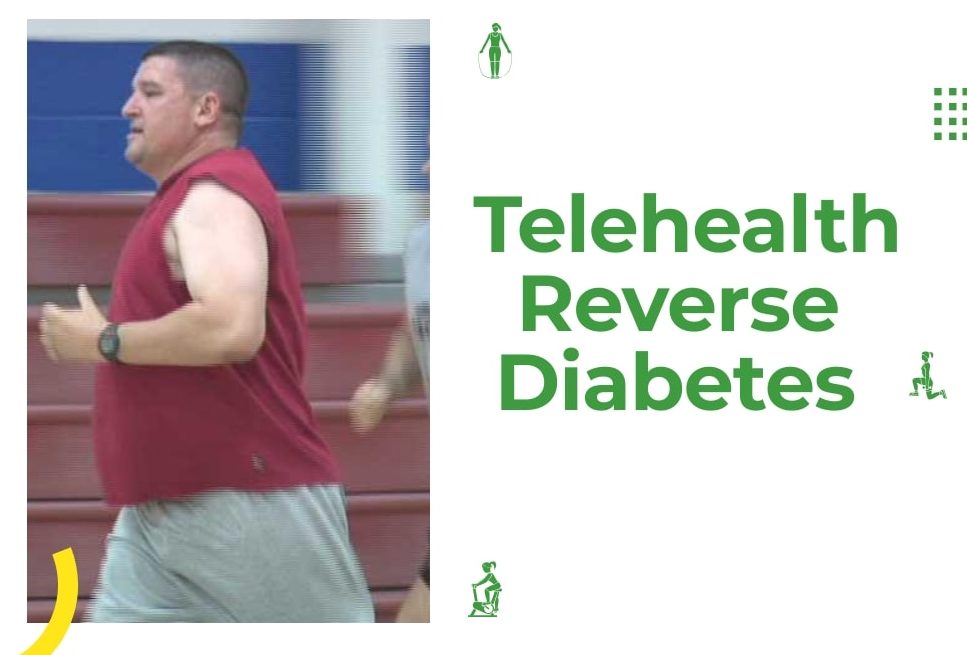
Remission by 10% is Triumphal, Rate of Failure by 90% is Tragic.
All who completely reversed their diabetes reduced their body weight by at least -15%.
Reducing total calories contributes about 80% of success in reversing diabetes while exercise and type of food eaten contribute about 20% of success.
Contact us and learn how to escape failure and achieve success!
What is the record?
A Study of people with Obesity and Diabetes in Scotland and England showed they could reverse diabetes while living at home. Investigators solicited about 1200 people in 49 privates practice clinics and 306 agreed to participate in the DiRECT Study. These were people who said they 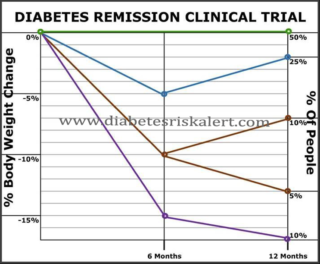 were willing to reduce calorie intake to 800 Kcal/day. Half of them were treated intensively and half were given standard self-management education.
were willing to reduce calorie intake to 800 Kcal/day. Half of them were treated intensively and half were given standard self-management education.
Results were remarkable! Almost half of those treated intensively for 12 months achieved remission of their diabetes.
As shown in the figure, half of those who reduced their body weight by -10% reversed their diabetes. Nearly all those who reduced their body weight by -15% had complete remission.
Equally remarkable was that 75% of people invited to participate either refused intensive treatment, reduced body weight less than -5% or actually gained weight. Look at the figure. As you can see, approximately 10% of those originally eligible to participate were actually successful.
 A Study of people who were Overweight or Obese and had Diabetes in the U.S. were treated for eight years. Investigators enrolled 5,000 people into the Look AHEAD Study. About half were treated intensively and half were given standard self-management education.
A Study of people who were Overweight or Obese and had Diabetes in the U.S. were treated for eight years. Investigators enrolled 5,000 people into the Look AHEAD Study. About half were treated intensively and half were given standard self-management education.
The figure shows the results. After eight years half had reduced their body weight at least -5% and one quarter had reduced their body weight at least -10%. Those who reduced their body weight by -15% had weight reduction sufficient to achieve remission of their diabetes.
Other similar studies have given similar results. In summary:
- 75% of people with diabetes have little change or continue to gain in body weight
- 15% reduce body weight at least -10% for partial reversal but not enough for remission
- 10% reduce body weight at least -15% and retain weight sufficient for remission after 8 years
“The Challenge is not finding what to do, it’s doing it.”
Learning Good Health Skills to Reverse Diabetes:
Think of reversing diabetes like learning a foreign language. We all start  out life learning one language or another. We learn more than how to talk to one another. We also learn all our daily activities, our skills, our preferences, our culture, how we feel about everything and how we think. It’s all stored in our brain.
out life learning one language or another. We learn more than how to talk to one another. We also learn all our daily activities, our skills, our preferences, our culture, how we feel about everything and how we think. It’s all stored in our brain.
Along the way we learned how to develop new skills. Now our plan is to develop skills that promote good health. Just like learning to play the violin or learning a sport like tennis or soccer. Or learning to play bridge, or poker or chess. We find out what to do and do it every day until we get good at it!
First of all, you need to know how any new skill fits into your ambitions for life. And you must actually like doing it.
The benefits from reversing diabetes are obvious to us. Better health makes us smarter, stronger, healthier and better looking with better sexual function and we sleep better. We avoid distress and disability. We live longer and we save money. Diabetes remission is a very good ambition for life!
Second of all, we must enjoy developing and practicing skills that are essential for reversing diabetes. We can aim our efforts at targets we know we can hit. Then we enjoy progressing day by day, practicing what we realize we can do and getting better at doing it.
Now we need to figure out how long that’s going to take:
The CIA says it takes 1000 hours to become skilled using a foreign language. That would be enough to debate or deliver a lecture in that other language. Training for 1000 hours takes 40 hours a week for six months.
Fortunately, we don’t need that level of skill to reverse diabetes all the way to remission! The Pareto Principle shows us what to do.
The 80/20 Pareto Principle in Reversing Diabetes:
The 80/20 rule states that 80% of results come from 20% of input. An example in medicine is the common assumption that 80% of the costs for healthcare comes from treating 20% of patients.
Did you notice the 80/20 Rule in the first section of this article? Reducing total calories 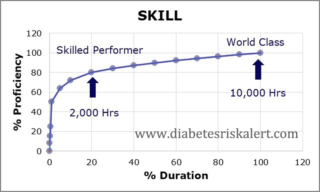 contributes about 80% of success in reversing diabetes while exercise and type of food eaten contribute about 20% of success.
contributes about 80% of success in reversing diabetes while exercise and type of food eaten contribute about 20% of success.
The Pareto Principle also appears in the way we improve as we learn and train ourselves in new skills.
If becoming a World-Class Expert requires 10,000 hours, it takes less time for most skilled performers in chess, music, entertainment and sports to gain recognition in about 2000 hours of training and performing. That’s an example of the 80/20 Rule in real life.
The CIA says it takes 1000 hours to become skilled using a foreign language. That would be enough to debate or deliver a lecture in that other language.
Language educators say that to be less proficient but still able to say something in a foreign language takes 50 to 100 hours of practice speaking, hearing and reading in a new language. That would be enough to call a taxi or find a restroom. Because we increase skill most quickly early in our training, we reach about 60% proficiency in 50 hours and 70% proficiency in 100 hours.
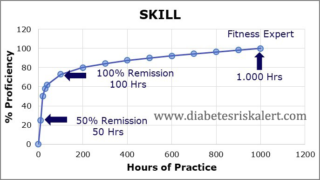 Investing 30 minutes a day would take 3 to 6 months reaching 50 to 100 hours of learning and practicing. That’s about how long it takes to successfully reduce body weight 1 to 2 pounds a week working at it 30 minutes a day.
Investing 30 minutes a day would take 3 to 6 months reaching 50 to 100 hours of learning and practicing. That’s about how long it takes to successfully reduce body weight 1 to 2 pounds a week working at it 30 minutes a day.
The first Section in this article reports results of treatment in the DiRECT Study. Half of those who were successful reached remission in 6 months and the remainder were successful in 12 months. The most intensive treatment occurred in the first 3 months.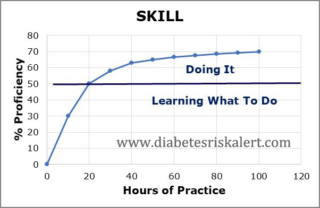
Practical experience shows that the during the first 3 months, 20 or 30 hours of skill development are spent learning how to increase physical activity and reduce body weight 1 to 2 lb/week. The remaining 80 hours of effort are invested in actually reducing weight and reaching remission.
Deliberate Practice Makes Perfect
Practical experience also shows that taking a classroom course a couple of hours a week for a year or so doesn’t make anybody able to speak in a foreign language. Zero proficiency. Sort of like our experience teaching Diabetes Self-Management Skills in a classroom.
There’s an old saying, “Practice makes perfect.” Arthur Rubenstein, a renowned pianist, once was stopped on the street in New York by a tourist who asked him, “Please tell us how we can get to Carnegie Hall?” Rubenstein replied, “Practice, practice, practice!” Then football coach, Vince Lombardi, was quoted as saying, “Practice doesn’t make perfect. Perfect practice makes perfect!”
renowned pianist, once was stopped on the street in New York by a tourist who asked him, “Please tell us how we can get to Carnegie Hall?” Rubenstein replied, “Practice, practice, practice!” Then football coach, Vince Lombardi, was quoted as saying, “Practice doesn’t make perfect. Perfect practice makes perfect!”
So the question is, “What is perfect practice?”
Anders Ericsson, a Swedish psychologist at Florida State University, worked this all out for us. According to Ericsson, deliberate practice involves stepping outside your comfort zone and trying activities beyond your current abilities.
While repeating a skill you’ve already mastered might be satisfying, it’s not enough to help you get better. Moreover, simply wanting to improve isn’t enough — people also need well-defined goals and the help of a teacher who makes a plan for achieving them.
Biobehavioral Training
The brain is an enormous network of neurons, connecting fibers and supporting structures. The human brain contains more than 100 billion neurons and each neuron has more than 7000 connections. Storage capacity of our brain is essentially unlimited. About 20% of all neurons are in the cerebral cortex where they can be accessed for short-term memory and conscious cognitive function.
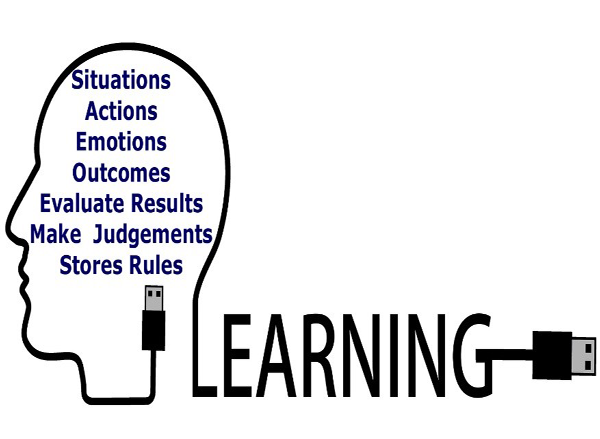 Anything we’ve ever done, learned or imagined and how it affected us is stored in our brain. Since birth, our brain stores information about situations, actions, emotions and immediate outcomes. It also evaluates results, makes judgements and stores rules about actions to take in similar situations. All our experience is coded and stored according to pleasure/pain assessments, social expectations and situationally expedience. Assessments and rules are based on an immediate pleasure/pain metric. As a result, short-term assessments according to internal feelings and external results, command a consistent predictable replication of behavior.
Anything we’ve ever done, learned or imagined and how it affected us is stored in our brain. Since birth, our brain stores information about situations, actions, emotions and immediate outcomes. It also evaluates results, makes judgements and stores rules about actions to take in similar situations. All our experience is coded and stored according to pleasure/pain assessments, social expectations and situationally expedience. Assessments and rules are based on an immediate pleasure/pain metric. As a result, short-term assessments according to internal feelings and external results, command a consistent predictable replication of behavior.
The operating system of our brain manages a whole range of physical, cognitive, emotional and inspirational functions. Situations and actions occurring in the past are most likely to predict our assessments, decisions and actions in the future. Consequently, 95% of our daily life goes on without conscious decisions about what to do, what to think and how we will feel about it.
Along with intrinsic control mechanisms, the human brain has conscious executive control over physical, intellectual and emotional behavior. We can learn and develop new ideas, new skills and new attitudes. Results are stored among neuronal circuits related to similar experience in the past. Frequent repetition makes our behavior more and more automatic and eventually occurs without conscious control.
Did I just hear you say, “I did that and it didn’t work for me.” Or was it “Forget that. Not for me!“ Don’t be angry or discouraged. You’re just reporting what your memory bank has stored. That’s a rejection report based on years of short-term pleasure/fear analysis.
Any first feeling is like a panel light flashing the output of an operating system onto the front of a computer. How some thought, situation or action is perceived is flashed as how you feel about it.
You still have executive control over that neurocognitive process. As you train in any new skill, you can tell how you’re doing by how it makes you feel. As you get more skilled, you’ll get pleasure knowing the long-term benefits replacing the original rejection signal. Our strategy is to test, revise, assess and retest until it feels good!
An essential concern is how to make implementing new skills automatic. For a long time, intrinsic control mechanisms have to be countered by conscious decisions.
 The question is sort of like how do you tell an elephant what to do. The answer is, there has to be something in it for the elephant. Executive control must include good feelings stored in memory. Satisfaction and pleasure from results favoring long-term outcomes makes new skills and new ideas more competitive with original short-term outcomes. For a long time, if you don’t think about it, the original pattern will take control.
The question is sort of like how do you tell an elephant what to do. The answer is, there has to be something in it for the elephant. Executive control must include good feelings stored in memory. Satisfaction and pleasure from results favoring long-term outcomes makes new skills and new ideas more competitive with original short-term outcomes. For a long time, if you don’t think about it, the original pattern will take control.
Adopt the attitude that practicing new skills makes every day more worthwhile. You will soon find that some days the only good thing that happened was success towards improving your health.
Getting Started
Test and discover what you can do every day that makes you feel good about your progress. Make action plans and revise your plans according to what happens when you try to carry them out day by day. Keep testing to find what makes you feel good about efforts to improve your health. If you feel good, you’ll keep following your plan and deliberately practice effective thoughts, decisions and actions.
Write down what you’ve done each day and how you feel about  it in a Good Health Journal. If you don’t feel good about it, figure out how to fix your plan or your situation. Develop the attitude of really feeling good about what you’re able to accomplish. Never mind what’s left to be done. Above all, avoid thinking you really should have done better!
it in a Good Health Journal. If you don’t feel good about it, figure out how to fix your plan or your situation. Develop the attitude of really feeling good about what you’re able to accomplish. Never mind what’s left to be done. Above all, avoid thinking you really should have done better!
An essential feature of good health skill development is daily repetition! Note the hours and minutes you spend on each task. Time is required for:
- Information and deliberation,
- Measuring, describing and reporting for Coaching,
- Food diary (My Fitness Pal),
- Physical activity (Pedometer)
Time to reach targets for hours invested (to reach consistent reduction body weight -1 to -2 lb/week) | ||||
| 30 min/day | 5 days/week | |||
| 50 hours | 6 months | |||
| 100 hours | 12 months | |||
| 60 min/day | 5 days/week | |||
| 50 hours | 3 months | |||
| 100 hours | 6 months | |||
- Report something every day. Start with 5 minutes/day, aim for 30.
- Make a conscious deliberate effort to increase your time and effort
- Be pleased and proud of what you’re doing. Most don’t even try!
Don’t Give Up
If it takes a little longer, so be it. We’ll stay with you until you succeed!
Call Us or Contact Us:
James Alan Herd, MD
Call: 713-669-0271
Email: Jaherdmd@herdhealthcare.com
Website: www.herdhealthcare.com




